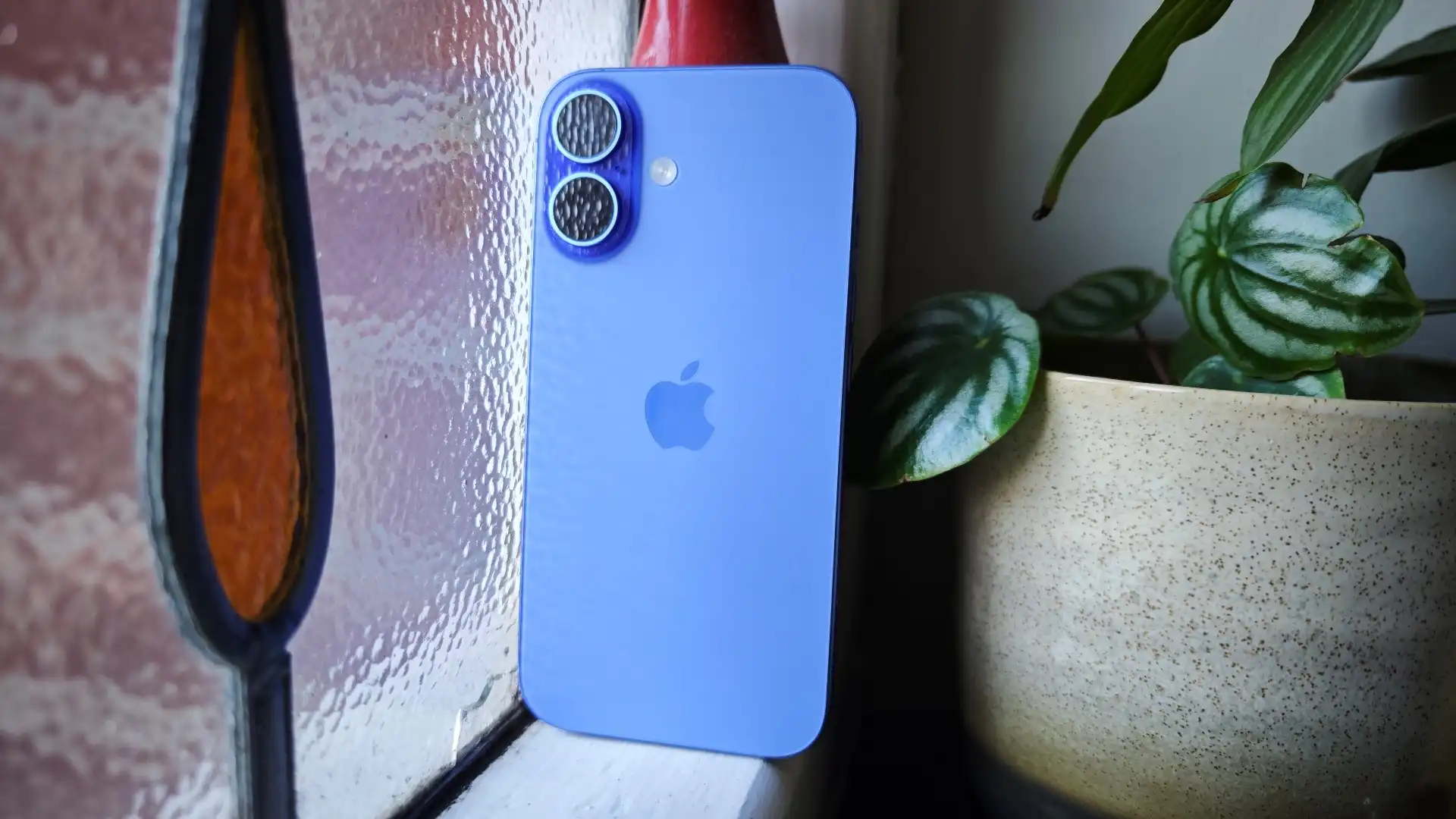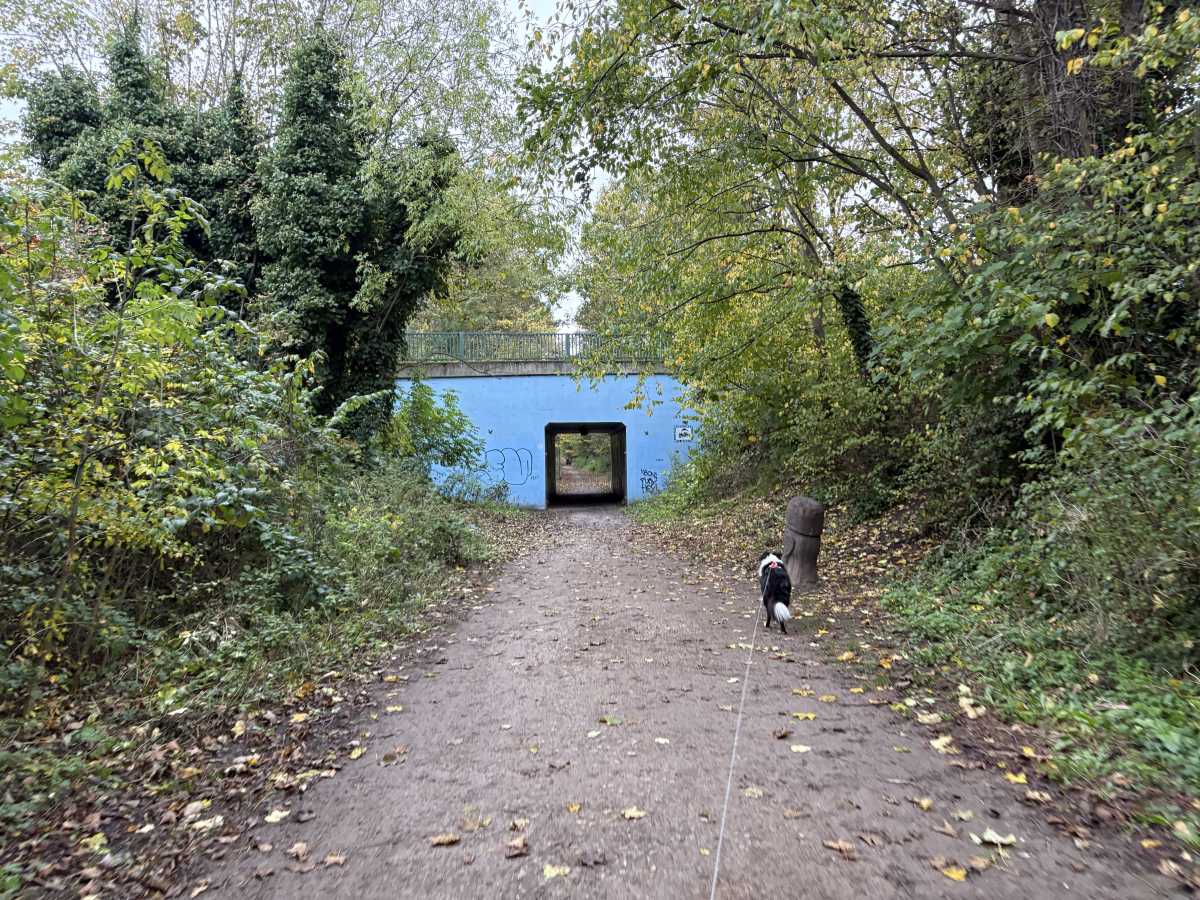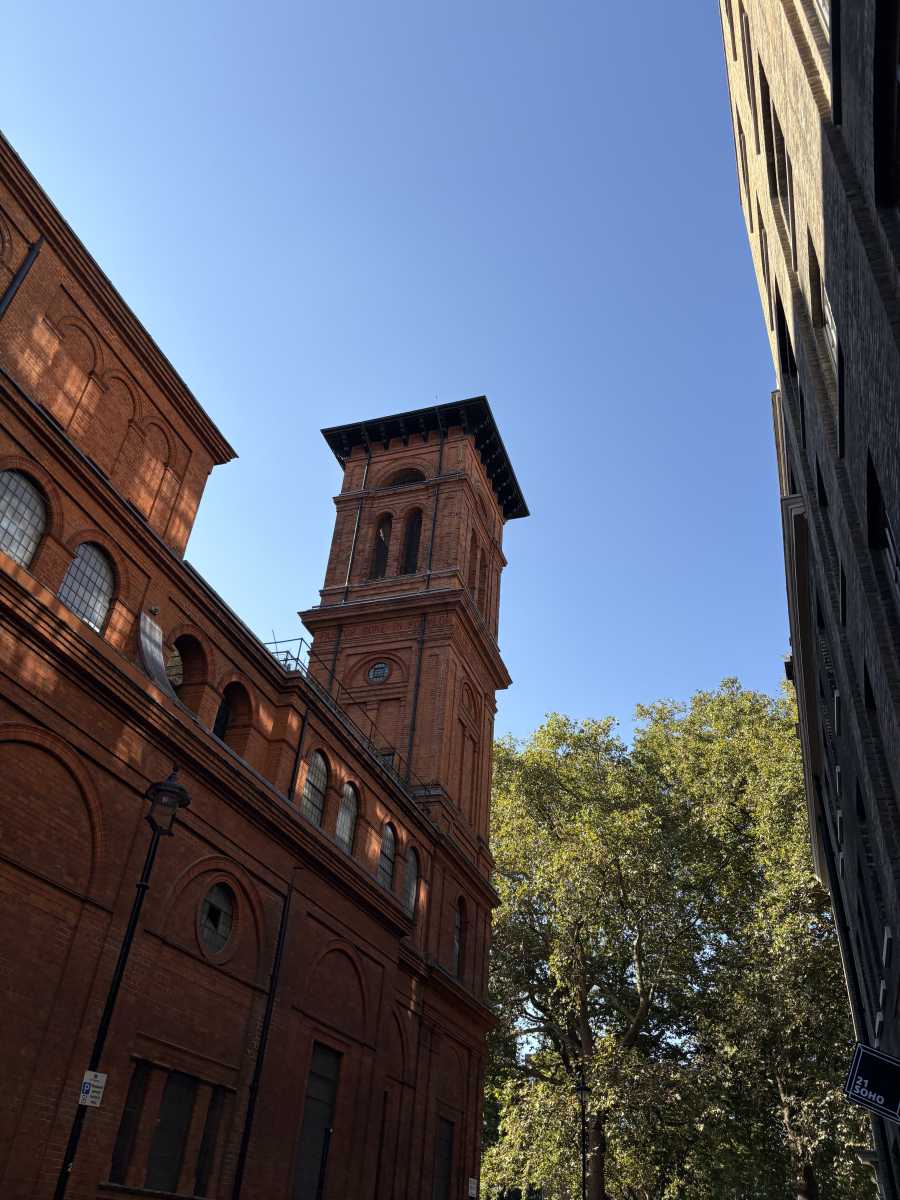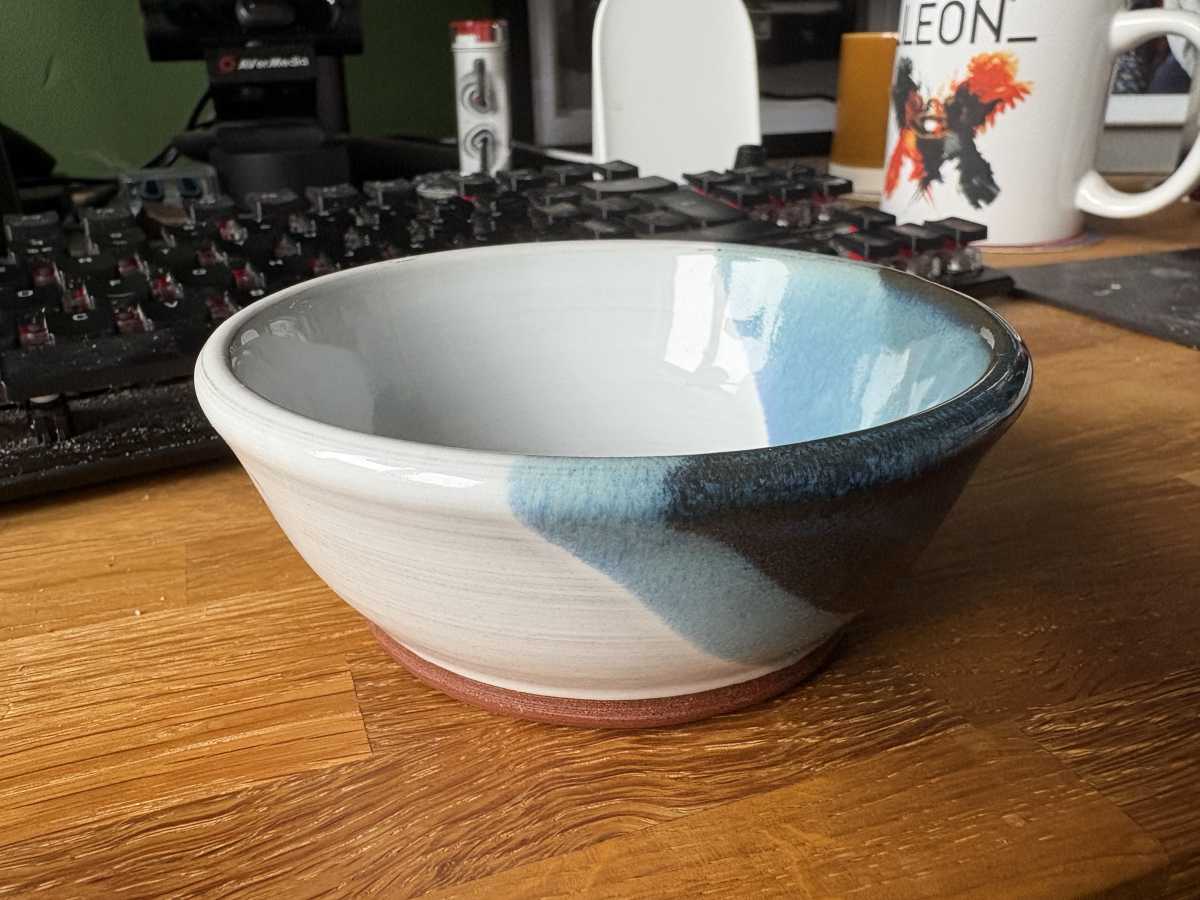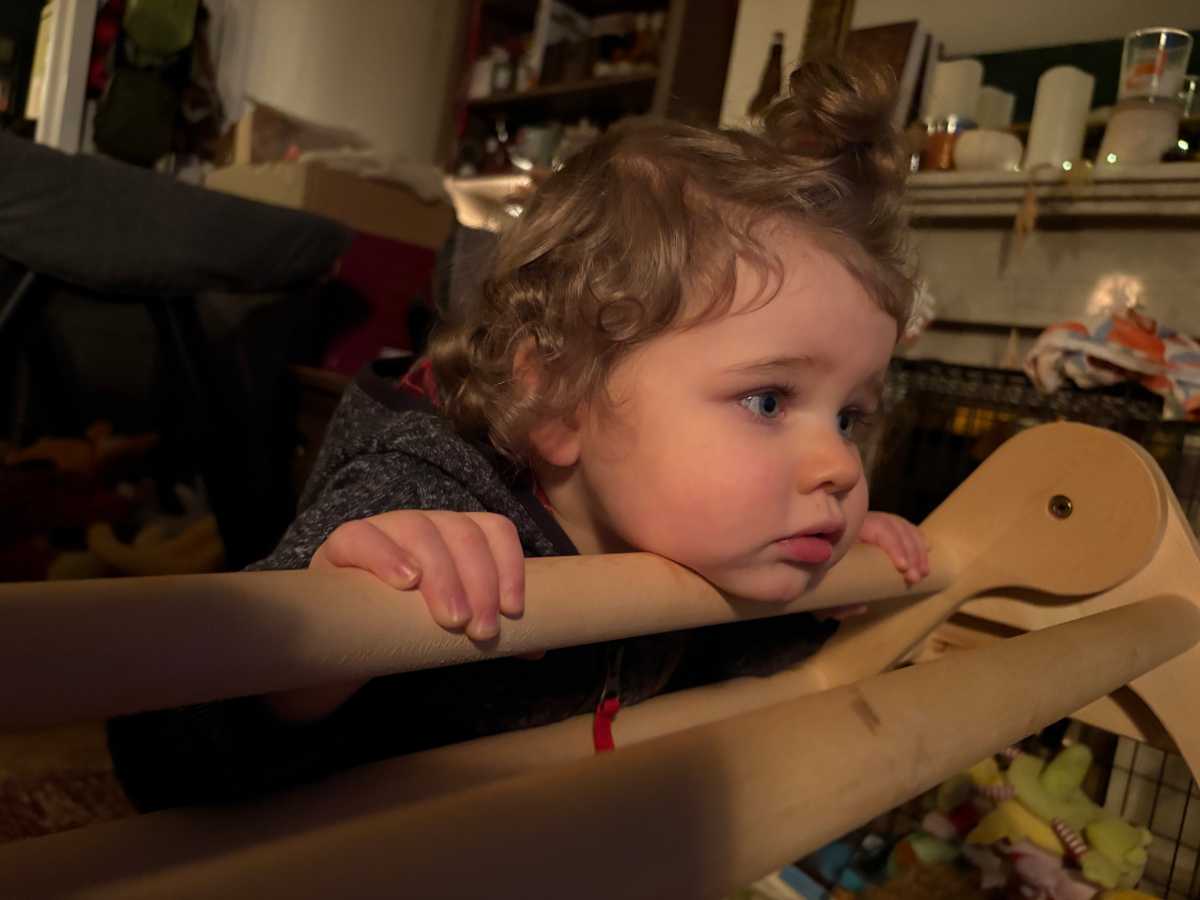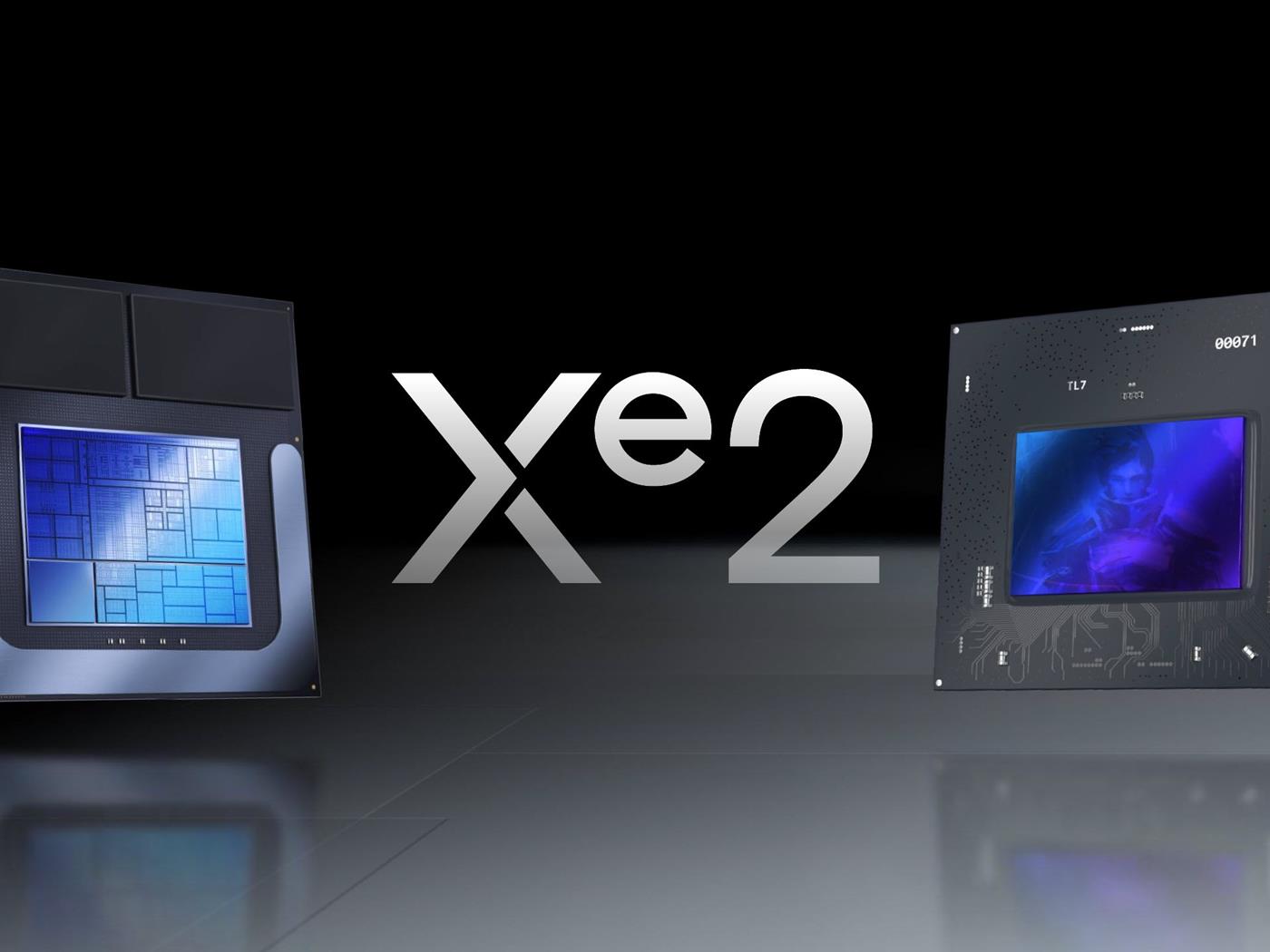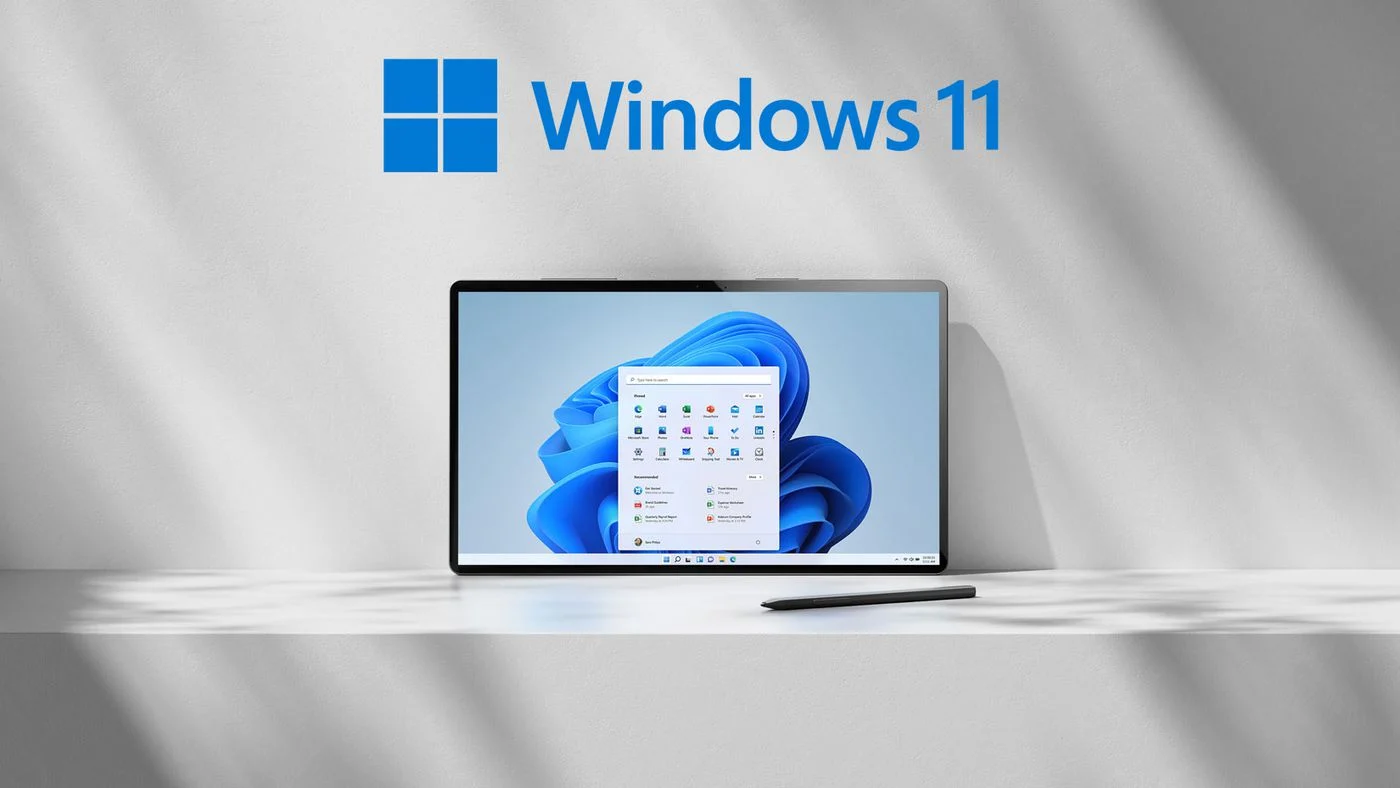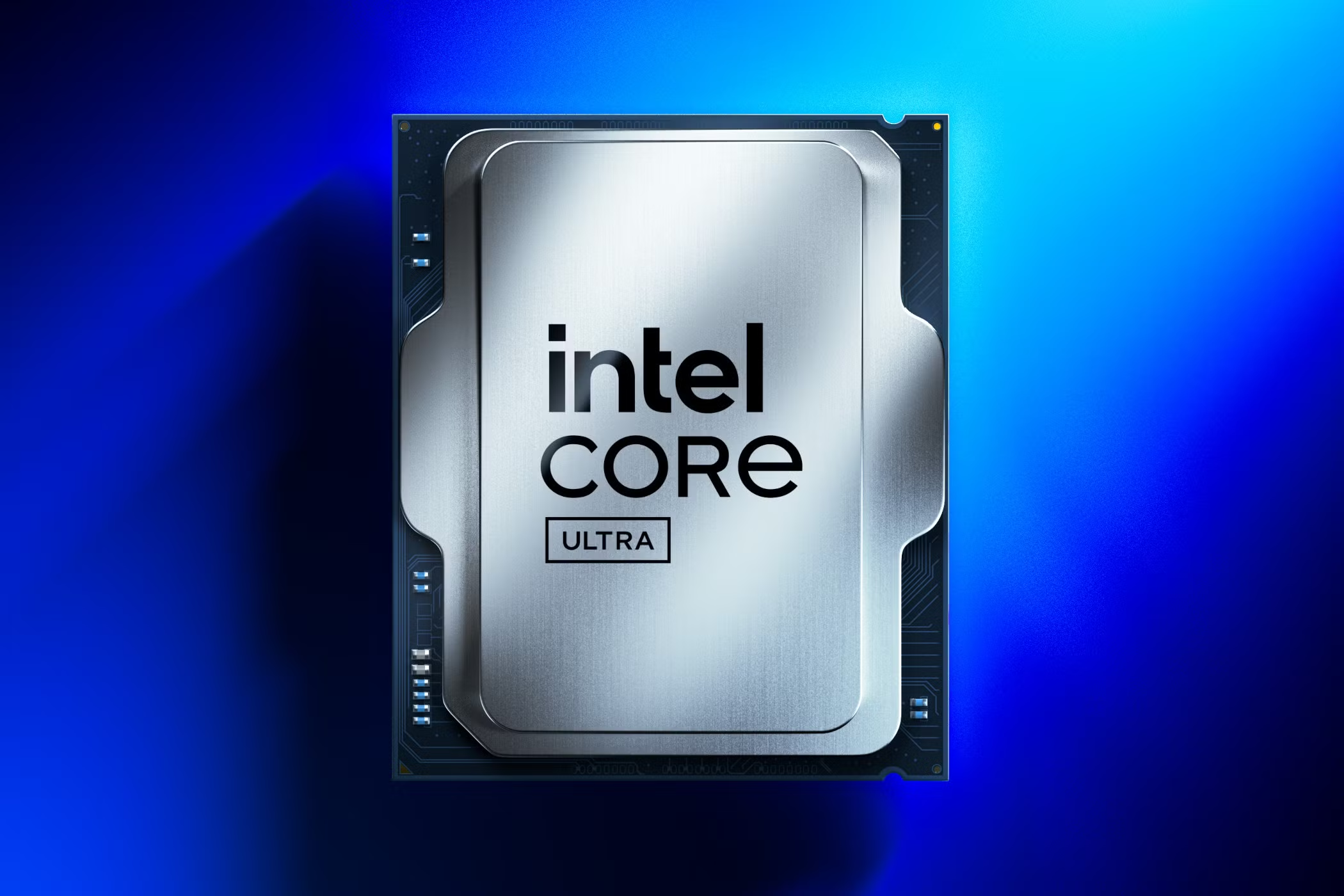Another year, another iPhone. In 2024, the focus from Apple, like almost every phone maker, is on AI.
Apple Intelligence aims to do all sorts of things for you to make your life easier, but it’s absent from the iPhone 16 range for now (in the UK), despite the phones being built for the AI system.
Fortunately, there are also upgrades to the camera, battery life and two new physical buttons but is it one of the best phones you can buy?
Design & Build
- New colours
- Action button
- Camera control
It’s no surprise that Apple hasn’t overhauled the design of the iPhone for 2024. So, the iPhone 16 is the typical combination of familiarity along with small tweaks here and there.
The overall look is the same as the last few generations, meaning the iPhone 16 has that old-friend feeling (assuming you’ve used an iPhone before) while having enough to make it new.
For starters, there are new colours available, including the striking Ultramarine option I’m testing here. It’s a vibrant mix of blue and purple without being garish, though you’ll probably cover it up with a case anyway.
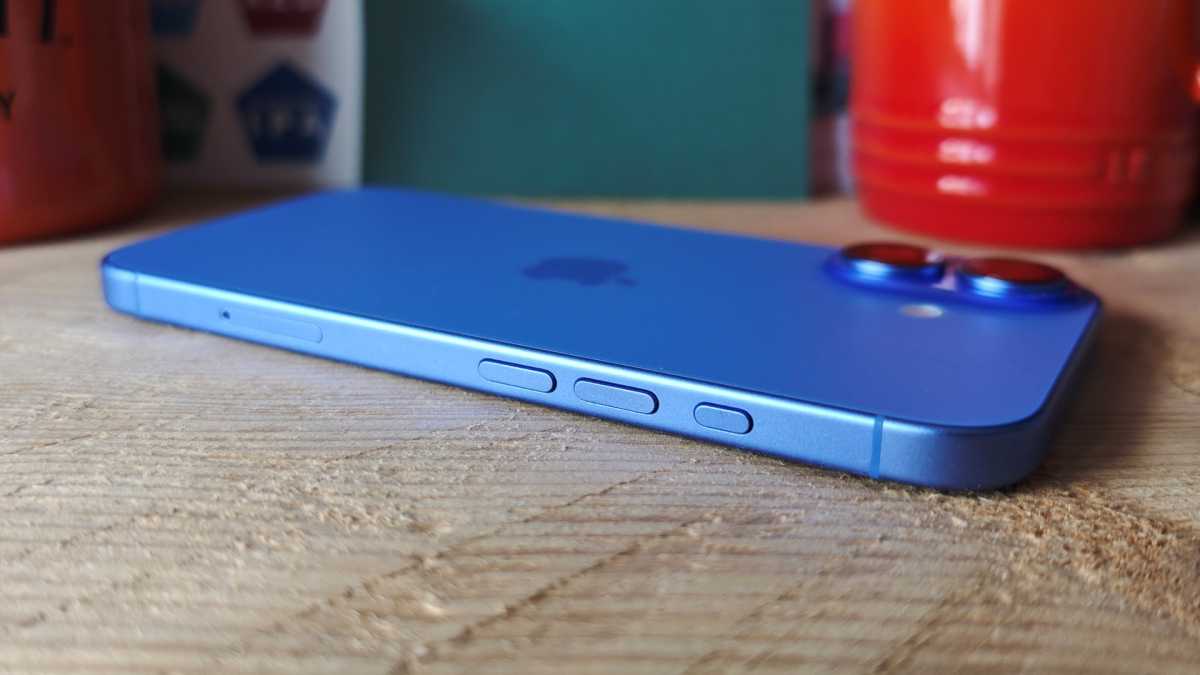
Chris Martin / Foundry
Other colourways comprise Teal, Pink, White and Black. Like the iPhone 15, I like the colour-infused glass on the back with its frosted finish but it’s still more slippy than I’d like.
From the front, the phone looks essentially identical to its predecessor, but there are changes on the sides and back. The camera module now has the lenses next to each other, rather than in a diagonal arrangement within a square module.
I prefer the look of the cameras this year, but it does make the phone more wobbly when on a flat surface, even with the official case on.
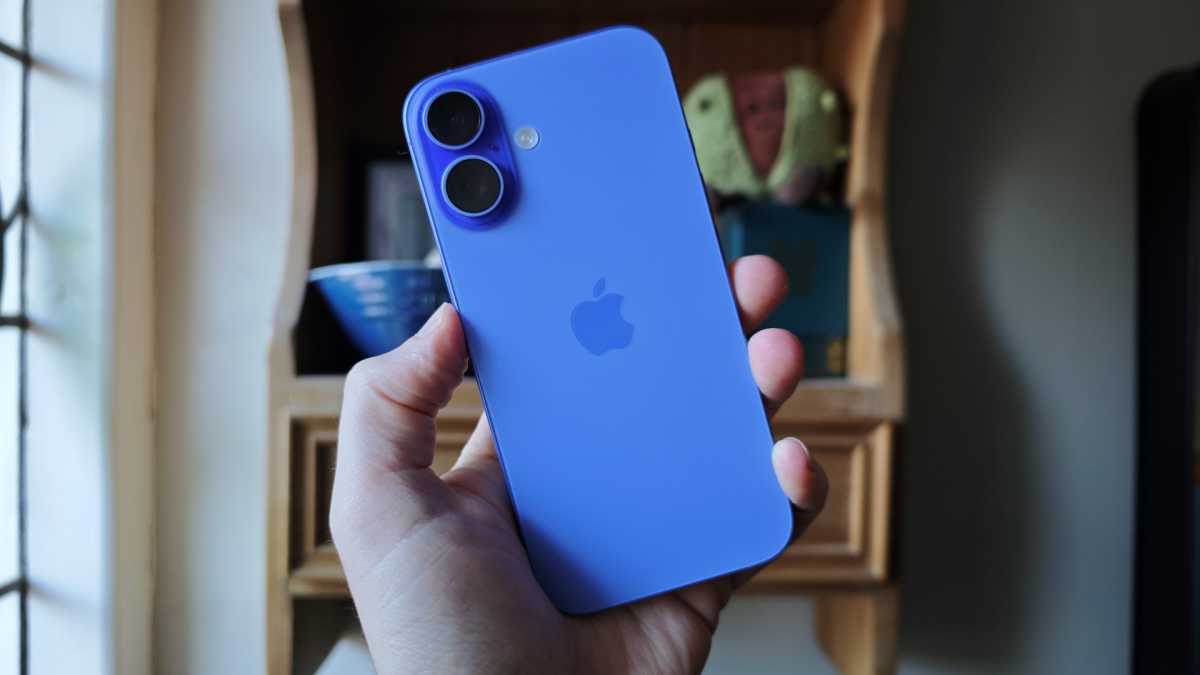
Chris Martin / Foundry
There’s a practical reason for this which I’ll cover in the camera section, where I’ll also go into more depth on the new Camera Control button. This sits on the right side so under your index finger when shooting in landscape orientation.
On the left, you’ll find the Action button, which was a Pro-only feature last year. This customisable button can do various things, but it replaces the iconic alert slider, which is a shame. I’d rather have that physical switch for muting and free up the Action button for something else like Shazam, translation or a shortcut to an app.
The physical size and shape of the iPhone are almost identical to previous generations, making it a nice balance of compactness but with enough screen. If you are upgrading from an iPhone 14 or earlier model, there are more noticeable upgrades.
The biggest of these is the switch from Lightning to USB-C for the physical port and Dynamic Island as a display feature. Haptic feedback is premium but I find it too aggressive at times for my liking, particularly when you get a phone call.

Chris Martin / Foundry
As usual, the phone is IP68 dust and water-resistant, and Apple has one of the best eco-friendly processes in the industry. The iPhone 16 uses more recycled materials than any model before it, including 95% recycled lithium in the battery and 100% recycled copper foil in the MagSafe inductive charger.
The packaging is also 100% fibre‑based for the first time.
Screen & Speakers
- Almost the same
- 1 nit brightness
- Still 60Hz
The display on the iPhone 16 is almost identical to last year, only it can drop to just 1 nit of brightness for dark situations when you don’t want to be blinded.
Otherwise, it’s still a 6.1-inch Super Retina XDR, meaning it’s an OLED panel with impressive specs and features like True Tone, wide colour, Haptic Touch and more.
While the screen is great overall and I like the size as a sweet spot of size and usability, there’s still one glaring issue
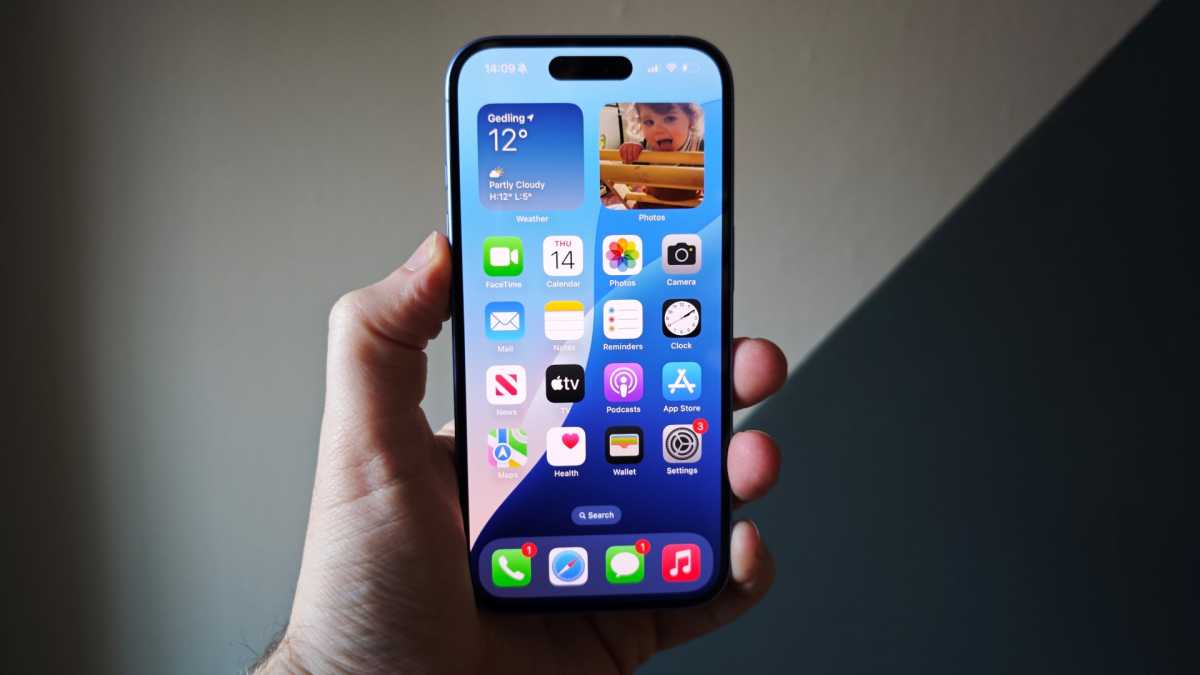
Chris Martin / Foundry
There’s no issue with image quality, as you would expect from Apple. The screen is crisp and vibrant and can reach a peak outdoor brightness of 2000 nits according to the firm.
I’ve had no problems using it and if you’re upgrading from an iPhone 14 or older then you’ll be gaining Dynamic Island. It’s a clever way to make use of the pill-shaped section of the screen which houses things like the front-facing camera to give you snippets of information and a shortcut to the app showing said information.
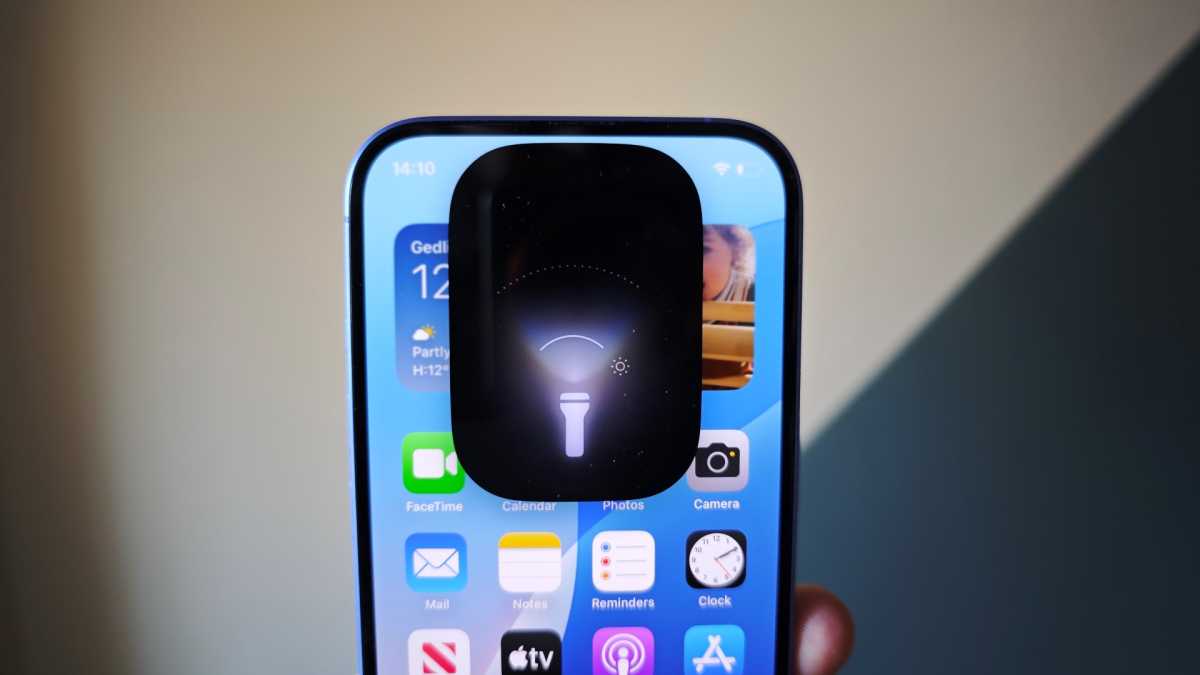
Chris Martin / Foundry
While the screen is great overall and I like the size as a sweet spot of size and usability, there’s still one glaring issue – Apple has still stuck with a 60Hz refresh rate.
In 2024 this is very basic and while 120Hz is reserved for Pro models, which I can understand to an extent, why not at least opt for 90Hz? The jump from 60- to 90Hz is noticeable in so many use cases and compared to the Android market, where you can get 120Hz on even budget phones (with caveats), this is just simply out of date.
The stereo speakers are very good and make for a good experience when you’re watching videos or listening to music without headphones.
Specs & Performance
- Apple A18 chip
- Starts at 128GB of storage
I’ll keep this section short as, apart from some software glitches which I’ll address later, the performance of the iPhone 16 is as you’d expect.
Rather than getting the chip from last year’s Pro models as the 15 series did, Apple now offers up the regular A18 chipset and the Pro phones get the A18 Pro.
As a quick overview, it’s a 3nm chip with a hexa-core architecture and a 5-core GPU.
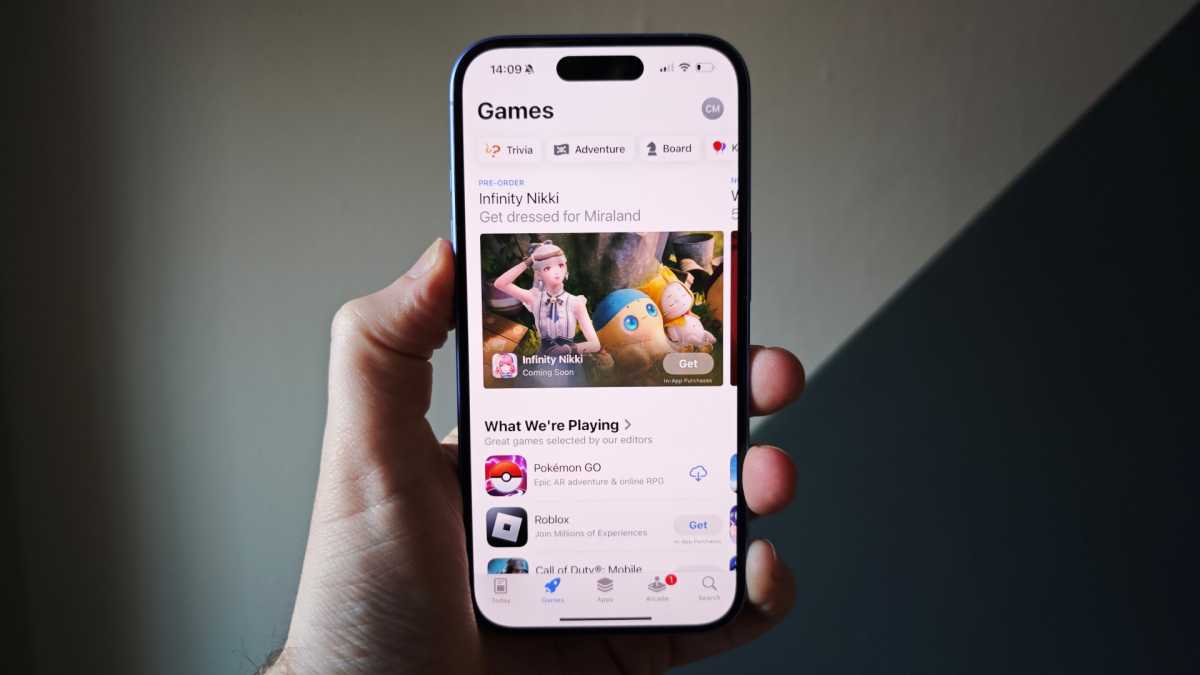
Chris Martin / Foundry
Performance is smooth, though as mentioned previously I’d like a higher refresh rate display to make the most of the A18. It can play games from Monopoly Go to PUBG with no trouble.
In terms of storage, it’s the familiar story of 128GB at the entry-level and you can jump to 256- or 512GB should you feel the need. Only the Pro models have 1TB though, if that’s what you’re after.
iPhone 16 benchmarks
Cameras
- Similar specs but now ‘Fusion’
- New spatial mode
- New Macro photography
- Camera Control button
Although the cameras have moved physically, the iPhone 16 comes with the familiar combination of a 48Mp main camera with a 12Mp ultrawide alongside it.
Though the specs are essentially the same as the iPhone 15, Apple is calling this an ‘all-new’ Fusion camera, meaning the main one can take full-resolution photos as well as the ability to take 2x optical‑quality telephoto snaps.

Chris Martin / Foundry
Essentially, the resolution is high enough to crop it to create a 2x zoom photo, but this isn’t uncommon in the wider phone market (and was on the iPhone 15 without this marketing term). A tweak to the ultrawide (which has a faster f/2.2 aperture) means it’s better in low light than before, at least in theory.
Bear in mind though that photos from the Fusion camera will be 12- or 24Mp depending on various factors, unless you go into the settings and switch on ‘Resolution control’ to access the full 48Mp. Just be careful if you do select this and have the 128GB storage capacity because it will fill up fast.
That setting, along with many other useful things, as usual, is a bugbear of mine. They’re not accessible in the camera app but in the main settings of the phone, with no shortcut to get there either.
Specs and settings aside, the quality of images from the iPhone 16 cameras is generally very good. Out and about in good lighting, you can snap away to your heart’s content, knowing you’ll get a well-rounded mix of detail, colour, exposure and the like.
I’ve found the camera to be less impressive when it comes to indoor low-light situations, but these are challenging even without trying to get a great shot of a two-year-old who’s almost always moving. Still, the same shots coming off the Google Pixel 9 are typically better when you look closer, or on a display bigger than the phone.
A new (to the regular models) Macro photography mode can automatically switch to the ultrawide camera for close-up shots but as I find with this type of feature (Apple or otherwise) I almost always prefer to switch it off and use the main camera, largely for the natural bokeh (seen on the left).
Spatial is a new mode in the camera app and the main reason why the cameras are now in a vertical layout on the back. It can create 3D images and videos, but you’ll need a Vision Pro headset to view them making it incredibly niche. As such, I can’t comment on their quality.
Everyone can use the new Camera Control button, which Apple hasn’t held back for the Pro models. It sits on the side looking like an additional power button of sorts.
You can use it to launch the camera (or customise it to another app) and then use it mainly as a combined shutter button and zoom control. It’s a great idea and similar to what we’ve seen, in a more basic form, from the likes of Sony for many years.
However, the execution of it isn’t great, starting with the position. It’s too far up the side, so when holding the phone in landscape, it’s a bit of a stretch to reach. It should be closer to the corner.
There’s a bit of a learning curve to using Camera Control but you do get used to it. Apply a small amount of pressure and the zoom control comes up so you can slide left and right. However, I want to swap the direction of what zooms in and out to what feels natural to me – you can’t.
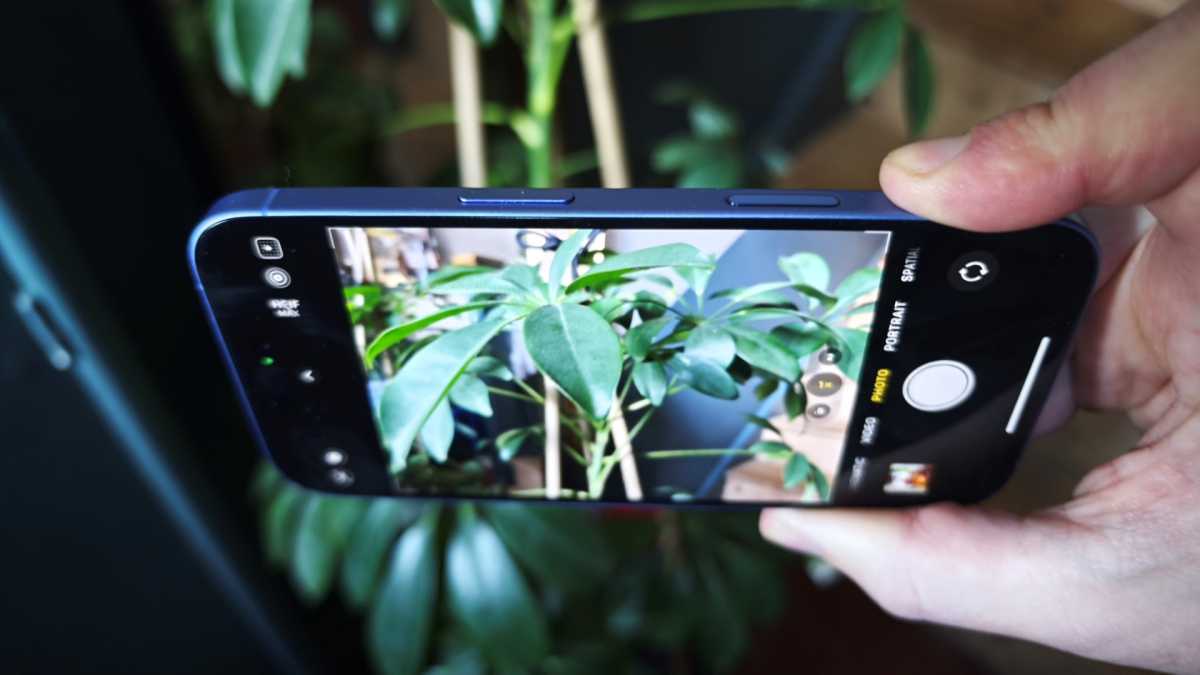
Chris Martin / Foundry
You can use the Camera Control slide gesture to adjust other elements such as exposure and styles but this isn’t obvious. Other apps can use it too and many of these issues can be potentially fixed with software updates, but the placement can’t.
I’d still rather have it than not as being able to quickly launch and snap with one button has resulted in some good shots I wouldn’t have achieved otherwise. Namely when a fast-moving toddler or dog only provides a narrow window of opportunity to get the shot.
To round off this section, the front-facing camera is 12Mp again and offers good-quality images. The iPhone 16 also remains one of the best phones on the market for video, with excellent quality and a range of features. I particularly like the Cinematic mode.
Battery Life & Charging
- Similar performance
- Faster wireless charging
On Apple’s website, it says the iPhone 16 can last 22 hours of video playback, which is two hours more than the iPhone 14 and iPhone 15.
However, I haven’t noticed a difference in general usage compared to last year’s flagship. Battery life is pretty good but also nothing to write home about.
I’m a light user, working from home and when I finish for the day looking after a toddler, and in my experience I use around 50% battery per day. It’s a two-day phone, but only with this lighter usage.
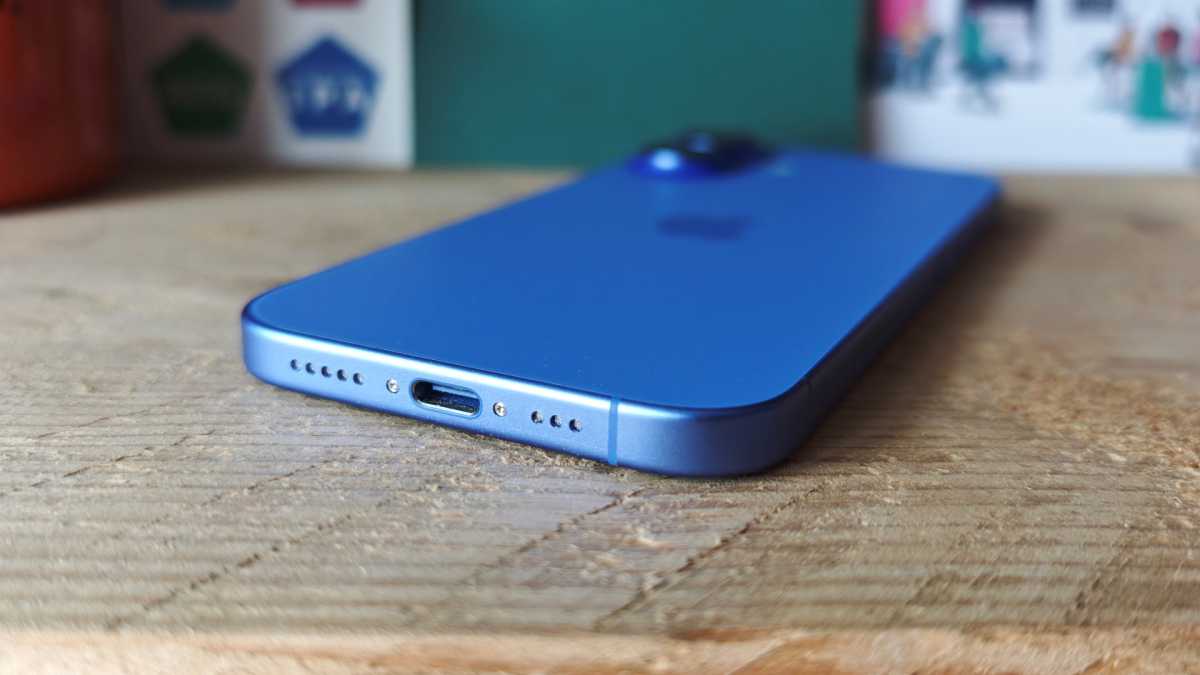
Chris Martin / Foundry
Most people will find themselves charging it overnight or perhaps even topping it up late on in the day. If I was still commuting to an office and using my phone for more hours of screen time each day, I’d seriously be considering the iPhone 16 Plus with its larger battery.
When it comes to charging, Apple still just supplies a cable, but advertises 50% charge in 30 minutes if you use a 20W adapter. Wireless charging is now faster at 25W rather than 15W, but again, you need the right MagSafe charger and a speedy enough adapter.
It also supports Qi and Qi2 wireless charging so you don’t have to use MagSafe. There’s no reverse wireless charging though, which is a shame.
Software & Apps
- iOS 18
- No Apple Intelligence
- Unexpected bugs
It’s no surprise that the iPhone 16 ships with the latest version of Apple’s operating system for phones, iOS 18.
It’s largely as you’d expect – user-friendly and slick – but I’ve had more problems than expected. Some bugs in the first versions of OSes are to be somewhat expected, but I experience them more with Android than iOS.
One new feature in iOS 18 that I love is the ability to customise the control centre
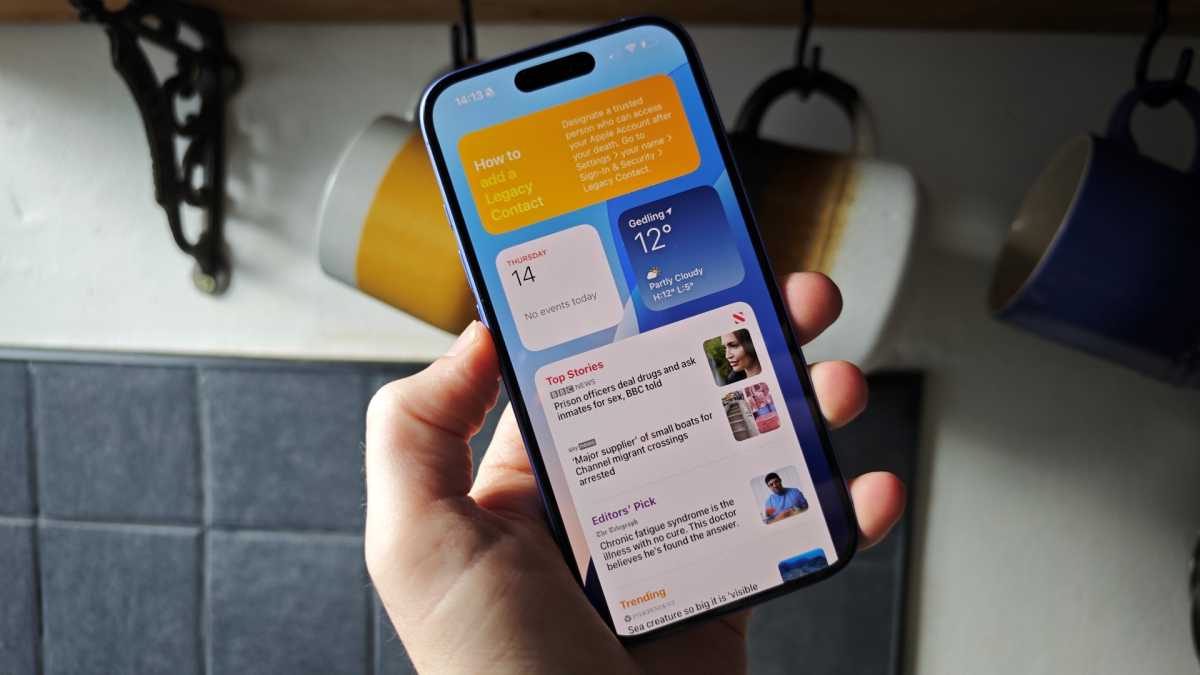
Chris Martin / Foundry
Oddly, on the iPhone 16, I’ve seen a number of annoying graphical glitches such as black bars across the screen, missing keyboards and tiny thumbnails of photos I’ve just taken. I’ve also seen the phone randomly reboot a number of times and a quick web search reveals I’m not the only one.
Then there’s the whole Apple Intelligence issue. The iPhone 16 range is built for Apple’s AI system but it’s not available at launch. At the time of writing it has rolled out in the US, but in the UK where I am, we have to wait until December and other markets must wait even longer.
It’s not the first case of AI features on phones being promised in the future but it’s more surprising from a company like Apple, which has full control over all its hardware and software.
One new feature in iOS 18 that I love is the ability to customise the control centre. It’s refreshing to reorder it and make it more efficient for the things you need the most.
Price & Availability
This year Apple has kept the price of the iPhone 16 the same as its predecessor. That means you can buy one from £799/$799, with that starting price getting you 128GB of storage.
If you want to jump to 256- or 512GB then it will cost you £899/$899 or £1,099/$1,099 respectively. See our where to buy the iPhone 16 guide for all the options in the UK and US, or below for the best contract deals.
With Google introducing a price jump for 2024, it means the iPhone 16 costs the same as the Pixel 9. The Samsung Galaxy S24 is also the same starting price but Apple is the only one of the three to offer 512GB storage on its entry-level flagship.
You can get the iPhone 16 on contract, of course, and you can see the top options below.
Check out our top 10 recommendations for the best phones right now.
Should you buy the iPhone 16?
As usual, the answer will depend on your situation.
If you’re going to upgrade, I think it makes the most sense for iPhone 14 or earlier generations, as you’ll see a much bigger difference than anyone using an iPhone 15.
Even for those with a 15, it might be tempting to jump in order to gain new features like the Action Button, Camera Control and Apple Intelligence. At the time of writing, I can only comment on the first two, and they are a mixed bag overall.
There’s no doubt the iPhone 16 does all the basics right, but is that enough in 2024? I’d say unless your heart is set on using Apple Intelligence, you’re better off waiting for the next generation or getting a now more affordable iPhone 15.
If you’re open to Android then there are, of course, plenty of great options with more impressive hardware features like high refresh rate screens and much faster charging.
Specs
- Operating System: iOS 18
- Display: 6.1-inch Super Retina XDR display
- Chipset: A18 chipset
- RAM: 8GB RAM
- Storage: 128/256/512GB
- Rear Cameras: 48Mp f/1.8 main camera, 12Mp f/2.2 ultrawide camera
- Front camera: 12Mp f/1.9
- Battery: 3561 mAh (reported)
- Charging: USB-C fast PD 2.0 charging, 25W wireless MagSafe charging, 15W wireless Qi 2 charging, 4.5W reverse wired
- Connectivity: Wi-Fi 7, Bluetooth 5.3, 5G, NFC
- Water Resistance: IP68 water and dust resistance
- Dimensions: 147 x 71.6 x 7.8mm
- Weight: 170g
- Durability: IP68
- Colours: Ultramarine, Pink, Teal, Black, White

